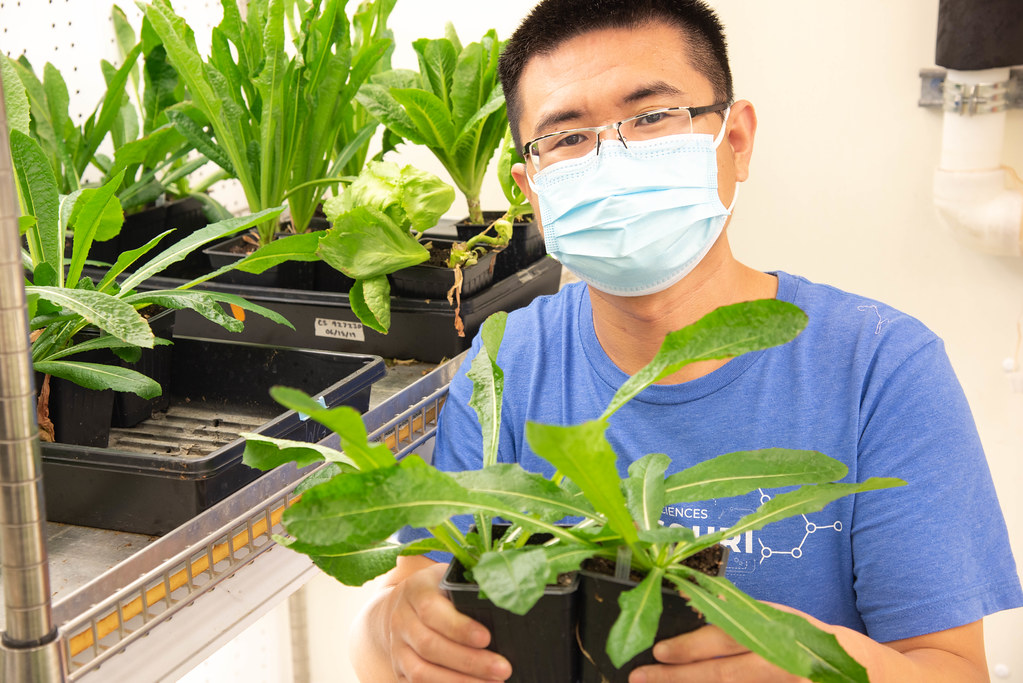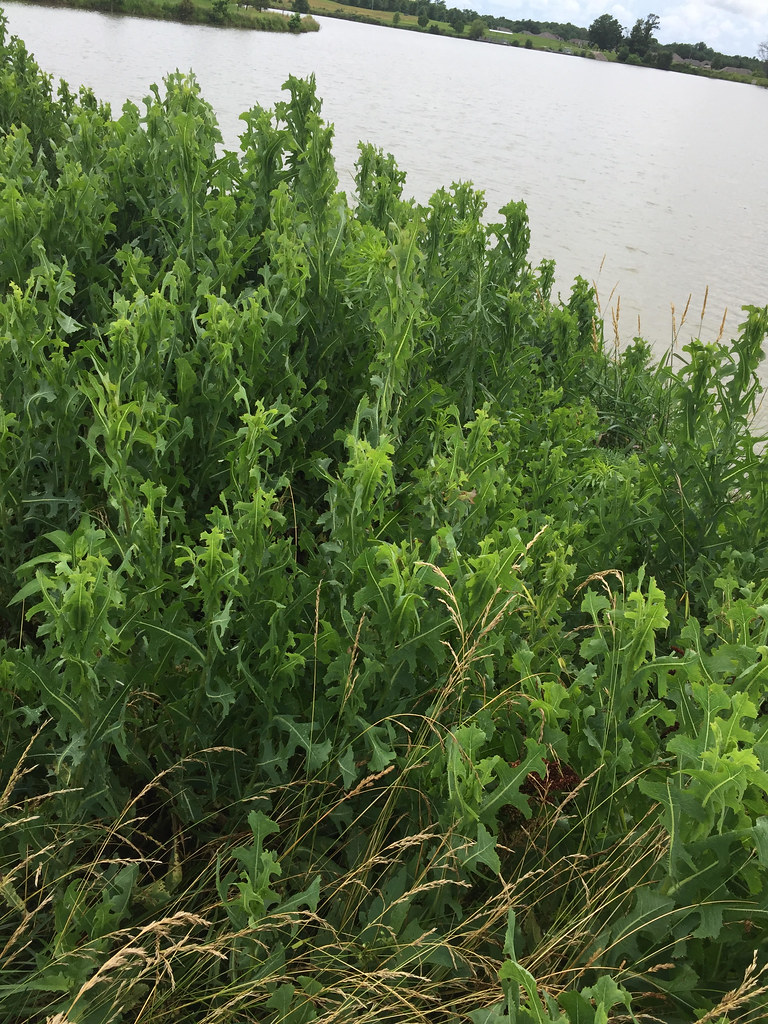Published on

By Lauren Hines | Bond LSC
Scientist Jianbin Su’s research lately took him outside to look at patches of grass and cracks in sidewalks around Mizzou’s campus, searching for a subject in the wild. He found his subject in the form of wild lettuce.
That search can potentially help Su — a research scientist in the Walter Gassmann lab at Bond Life Sciences Center — better understand the immune system of lettuce and therefore protect it against diseases like Downy Mildew and Xanthomonas, which would increase lettuce crop yield.
Su’s paper under review about how the pathogen effector protein, AvrRps4, interacts with lettuce’s immune system will hopefully soon be accepted in the journal Molecular Plant-Microbe Interactions.
“Scientists in Florida are still focusing on lettuce resistance to Xanthomonas,” Su said. “If we can find a mechanism where lettuce recognizes our protein, this finding can be applied to make lettuce immune to Xanthomonas.”
Xanthomonas causes bacterial leaf spots and is a serious seed-borne disease that results in significant losses for the lettuce industry
To infect a plant successfully, the bacterium must inject 30 to 40 protein effectors, like AvrRps4, in the cell and interact with multiple plant cell functions at once to overcome the host. Effectors for a pathogen can bind to proteins that affect the biological activities of the plant, letting the disease invade the plant, suppress its immune system and allow Xanthomonas to survive.
However, when the plant cell’s receptors recognize the pathogen, it can trigger its immune response. To stop the pathogen from growing, the plant cell initiates a hypersensitive response by killing itself. If the plant can’t stop the pathogen, it will multiply and affect much larger areas of the leaf. This will ultimately destroy the plant tissue and cause the characteristic round, brown dead spots on the lettuce leaves.
“Plants can afford the hypersensitive response because their developmental program isn’t set in stone like in most animals,” said Walter Gassmann, interim director for Bond Life Sciences Center. “They can adjust their growth in real-time…so losing a leaf is not a big deal to a plant, not like us, losing a limb or something like that.”

Once AvRrps4 enters the plant cell, it splits up into two parts: AvRrps4-C and AvRrps4-N. Some plants like flowers, tomatoes and melons only recognize the C part, but lettuce only recognizes the N part of the effector.
“The C part of AvrRps4 has been studied by many labs, and they’ve already found some mechanisms,” Su said. “The C part attacks a group of important proteins that are required for plant immunity. That’s the function of the C part, but the function of the N part is not clear. That’s what I’m focusing on in lettuce.”
Recognition is important because, without it, plant cells can’t respond to fight off the pathogen.
Su is studying lettuce not only because it hasn’t been studied as much, but so far, it’s the only plant that requires recognition of both parts to initiate immunity.
This means lettuce evolved to recognize and attack AvRrps4-C. In turn, the effector evolved by adding a second part to prevent recognition by plants.
This evolutionary choice, if you will, is odd. Instead of getting around the immune response by getting rid of the protein that is recognized, the protein added a second part to itself. This means AvRrps4-N, the original part, must possess a vital function for the pathogen worth keeping.
“That’s why we think this effector arose in nature,” Gassmann said. “It’s because the first part triggered a very strong immune response, something else got tacked on to it to weaken that immune response to give the pathogen a leg up.”
This evolutionary battle can be seen in Mizzou’s very own backyard. Su found five different types of wild lettuce. After testing if the types were able to recognize the N part of the effector, he found two of the five did.
Since some did and others did not, Su thinks the receptor for recognizing the effector has been lost in some wild lettuce types due to evolution and the absence of the pathogen in certain areas.
“We haven’t found the lettuce receptor but based on this information we can narrow it down,” Su said. “Right now, we have 36 candidates. We are already sure that among the 36, there’s 99.999% that there is one receptor that recognizes our protein.”
Su still has much work left to do but, for now, he resubmitted his paper Oct. 5.
“Once we identify the receptors that recognize our protein, our research will go into the next direction, and maybe have some application purpose for our research,” Su said.